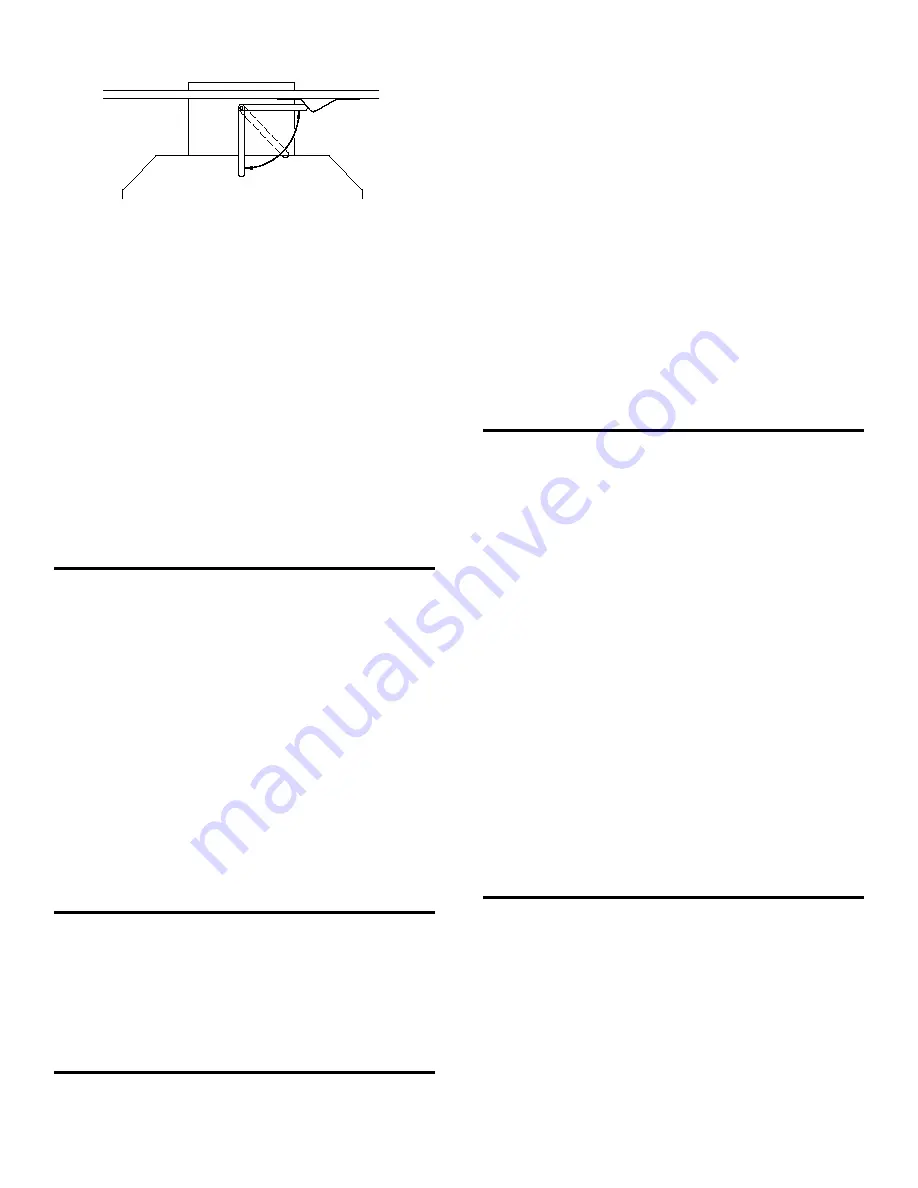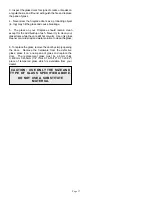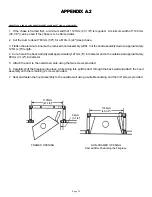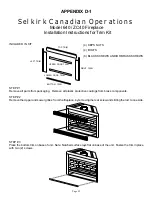
Page 16
OPEN
CLOSED
FIGURE 29
3. The outside air control can be moved to either the open
or closed position to allow outside or inside air to the firebox.
By use of the optional blower and its variable speed control,
the desired amount of fresh air for you and your home can
be obtained and controlled.
4. Never build to large a fire, and be sure to avoid quick hot
flash-type fires. Use only sufficient kindling to start well
seasoned hardwood.
5. Never use gasoline, kerosene, charcoal lighter fluid, or
similar liquids to start or ‘freshen’ a fire in the Model
640/ZC40 fireplace. Any such liquids should be kept well
away from the fireplace.
6. Any combustibles and furnishings should always be kept
away from the fireplace opening.
OPERATING THE FIREPLACE
1. While operating your fireplace ensure that the damper is
left fully open at all times while the fire is burning, and also
keep the curtain screen closed to prevent sparks from
entering the room.
2. In order for the fireplace to run safely and efficiently it is
necessary for air to circulate through the fireplace at all
times.
NEVER BLOCK THE CIRCULATING AIR INLET AREA
OR THE HOT AIR OUTLET AREA.
ONLY OPERATE THE FIREPLACE WITH THE
GLASS DOORS FULLY OPEN OR FULLY CLOSED,
AS PARTIALLY OPEN DOORS MAY
DRAW SMOKE AND FLAME OUT OF THE FIREPLACE
AND INTO THE LIVING AREA.
DISPOSAL OF ASHES
When disposing of ashes, they should be placed in a
metal container with a tight fitting lid. The closed container
should not be placed on a combustible floor, and kept away
from other combustible materials until the ashes have
cooled or been removed from the container. Before disposing
of ashes, ensure that all cinders have cooled thoroughly.
CREOSOTE, FORMATION & NEED FOR REMOVAL
1. When wood burns slowly, it produces tar and other
organic vapours which combine with expelled moisture to
form creosote. The creosote vapours condense in a relatively
MAINTENANCE OF YOUR GLASS DOORS
1. If you have a set of optional glass doors installed (See
Appendix C), always ensure that the screen is also closed
when operating the fireplace. This will help prevent a log or
hot coals from falling against the glass and possibly causing
the glass to shatter.
2. CAUTION: Start your fireplace slowly to heat the glass
gradually in order to avoid sudden temperature changes in
the glass. Do not build your fire too close to the glass and
ensure you always operate the fireplace with the damper
fully open in order to prevent excessive heat buildup which
may cause premature failure of the glass.
cool chimney flue of a slow burning fire. As a result creosote
accumulates on the flue lining, and when ignited makes
extremely hot fire. The chimney is not intended nor been
designed to be used as a combustion or fire chamber. By
burning kindling, scrap lumber, brush or other fast burning
fuel, you can overfire your fireplace which can produce
flames and high temperatures all the way up the chimney.
This can result in damage to the chimney if continued for
more than a couple of minutes.
2. DO NOT OVERFIRE A HAND-FIRED APPLIANCE.
3. KEEP YOUR CHIMNEY CLEAN. With a new installation,
the chimney should be inspected frequently (every two
weeks) to determine the rate of creosote formation. Once
familiar with your fireplace, and the chimney characteristics,
the chimney should be inspected at least once every two
months during the heating season to determine if creosote
or soot build-up has occurred.
CHIMNEY FIRES, WHAT TO DO IN THE EVENT
OF ONE
1. If a fire has got out of control in your fireplace or you
suspect a chimney fire for any reason, immediately close the
curtain and optional glass doors if installed.
2. Closely inspect in and around the fireplace and chimney
for a possible fire. If you are in doubt contact your local fire
department and alert any people in the building of the
possible danger.
3. Do not use your fireplace again until it and your chimney
have been thoroughly inspected by a qualified heating
person. Overheating of the fireplace and chimney can
cause them to become defective as metal parts expand,
buckle, and crack under these adverse conditions. Any of
these defective parts must be replaced to ensure your
safety.
4. Never use water to put out a fire in your fireplace, as this
will cause a dangerous steam explosion. To control the fire
you might use ashes, sand, or baking soda.










































